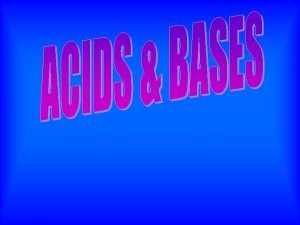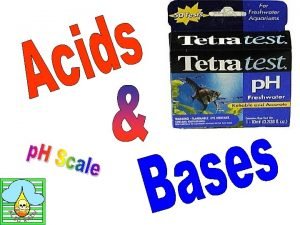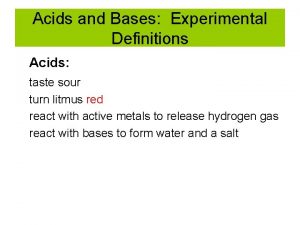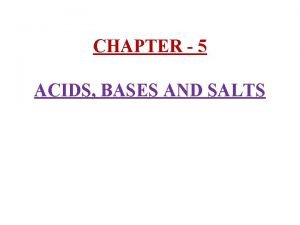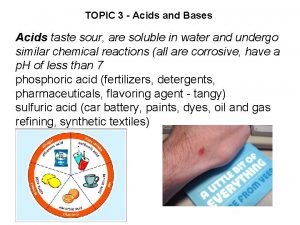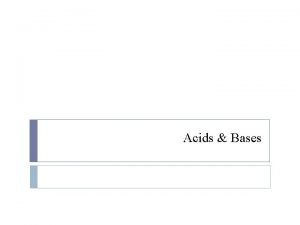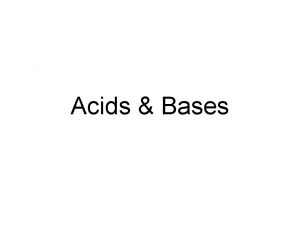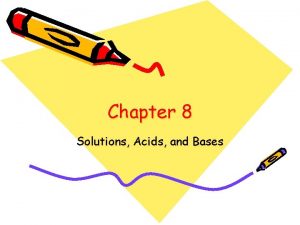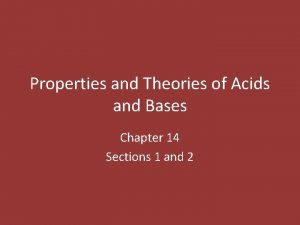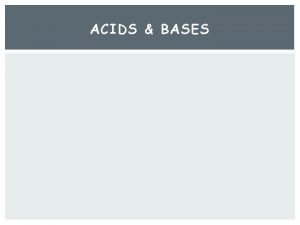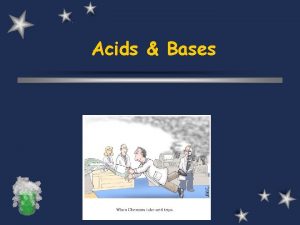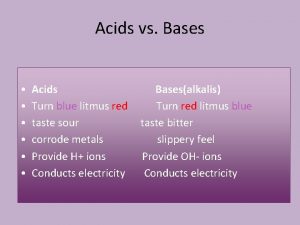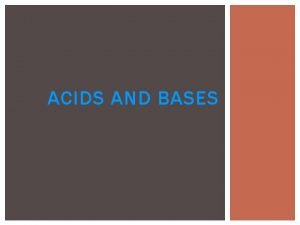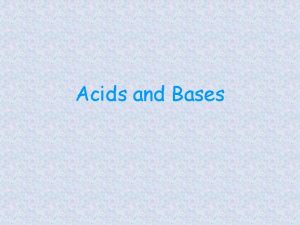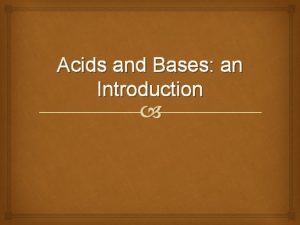Acids produce solutions that Taste sour Turn litmus












- Slides: 12


Acids produce solutions that: • Taste sour • Turn litmus paper red • Conduct electricity • react with metals to free a hydrogen gas • are corrosive (acid rain) • lose the above properties when reacted with a base.


Examples of acids: • Vinegar • Lemon Juice • Soft Drink • Battery Acid • Stomach Acid • Apple Juice • Black Tea

Bases produce solutions that: • taste bitter • turn red litmus blue • conduct electricity • feel slippery • are corrosive • lose the above properties when reacted with an acid.

Examples of bases: • Detergent • Baking Soda • Drain Cleaner • Ammonia • Soaps (hand, dish) • Antacid

• These are items that are neither acids nor bases. • The main example of a neutral item is: Water Pure

• Red litmus paper • Blue litmus paper • p. H • Red Cabbage Juice

the negative logarithm of the hydronium ion concentration of an aqueous solution; used to express acidity. • p. H is the measure of the acidity or basicity of a solution. • The p. H scale ranges from 1 to 14 • 1 through 6 being acidic • 7 is considered neutral • 8 through 14 being basic

• Proteins in your hair, nails, cell membranes, and other parts of you body consist of amino acids. • Enzymes that catalyze reactions in your body are composed of amino acids. • Hydrochloric acid is in your stomach to aid in the digestion of food. • Organic bases are major components of DNA and products of the digestion of proteins.

• Background information on acids and bases. <http: //educ. queensu. ca/~science/main/concept/chem/c 10/C 10 CDMJ 1. htm> • Acids and Bases. <http: //www. bookrags. com/research/acids-and-bases-woc/> • Acids and bases Lab. <http: //www. Scribd. com/doc/2977162/Acids-and-Bases-Lab/> • Smoot, Robert C. ; Price, Jack S. ; Smith, Richard G. Chemistry A Modern Course. Chapter 24, Acids, Bases, and Salts. • Holt, Rinehart, and Winston, Inc. Chemistry Visualizing Matter. Chapter 13, Acids and Bases.

 Acids have a taste and they turn litmus to
Acids have a taste and they turn litmus to Acids have a taste and they turn litmus to
Acids have a taste and they turn litmus to Bases taste sour
Bases taste sour Natural indicators
Natural indicators Sour topic
Sour topic Taste of a base
Taste of a base Acid vs base
Acid vs base Acids are ____to taste
Acids are ____to taste Taste acids and bases
Taste acids and bases Acids are ____to taste
Acids are ____to taste Thơ thất ngôn tứ tuyệt đường luật
Thơ thất ngôn tứ tuyệt đường luật Tôn thất thuyết là ai
Tôn thất thuyết là ai Thơ thất ngôn tứ tuyệt đường luật
Thơ thất ngôn tứ tuyệt đường luật
